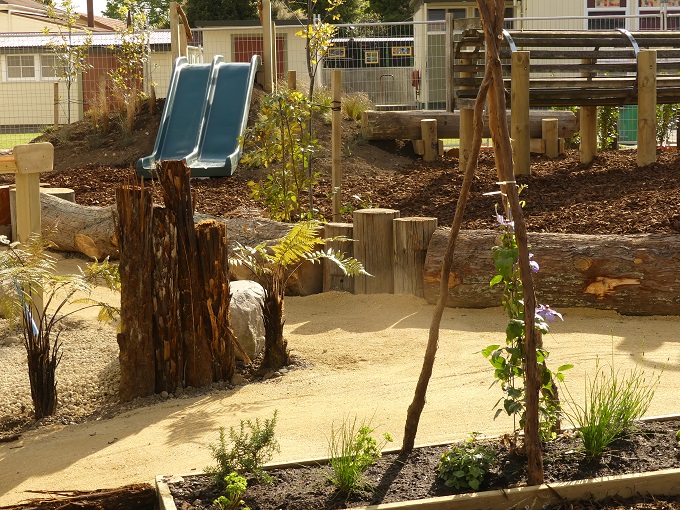
“Compass Playgrounds create natural spaces emphasising social and play based learning. Consultation with clients is integral to the design process.” - Tim Anderson, Compass Playgrounds
We originally published this in our Term 1 Issue. Click here to read in-full.
Twisty, challenging climbers, rock walls and other obstacle-type apparatus will require nimble limbs to use fine motor skills, strength and they’ll have to plan ahead. Social development can be nurtured with cubby houses, towers, tunnels and crawl spaces where small groups can build forts and the new kid can stumble into a friendship.
Older children, too, will jump at the chance to explore an obstacle course-style playground designed and reinforced for use by bigger people: these fitness trails can be utilised during lunch or as part of an engaging physical education lesson.
Don’t want to start from scratch? Decide on one need you’d like to fill, or one element of playground use that you’d like to introduce or boost, such as fitness benefits for students, and approach suppliers with that in mind.
The Ministry of Education (MoE) has outlined that that board of trustees is ultimately responsible for designing, building and upgrading playgrounds and providing playground equipment. Regular maintenance is key to keeping on top of the situation.
Schools must also use board funding to build a playground. This funding may come from fundraising, grants from trusts and community groups, or bequests. Schools will still need to obtain Ministry consent to use board funding for property projects like playgrounds.
The MoE specifies: “You or your project manager should contact the local council to find out whether your planned playground needs building consent. Even if it does not require building consent, you must still get this advice in writing from the council and keep it in the project file for future reference.”
In many ways, this is the fun part: choosing and designing an fun-filled, engaging playground that is conducive to impactful learning and positive stress relief for students is an exciting prospect. Many schoolchildren would envy the task: designing a playground? Surely that’s the dream job.
Of course, designing a playground is more complex than a child might imagine. A property manager or specialist supplier/manufacturer will be eager to discuss available options with you, and aid in the process but the main focus must be adhering to government standards.
In New Zealand, what you need to look for is called the New Zealand Standard 5828:2015: Playground equipment and surfacing. Standards NZ has a comprehensive website explaining compliance and there is also a handbook that can be purchased.
The two concepts might not ordinarily be associated with one another, but playgrounds bridge the gap. In this realm, generally, the safer the playground the more stylish it looks.
If you imagine an ‘unsafe’ playground, it’ll be one that’s not properly maintained or cleaned, is broken and filthy, with something like a hard concrete floor or trip hazard weeds. Not so pretty and certainly not safe. You could also place more dangerous playground equipment in this category – dirt tracks for bikes, or skate ramps. The MoE refers to items like trampolines and skate tracks as “high risk” and notes: “When deciding what type of equipment to install, consider whether it will affect your ability to provide a safe environment for your students.”
Fully compliant playgrounds have to be properly maintained, neat and tidy. Surfacing is vital and there are a variety of options to consider, with different pros and cons, from wood-chip or bark mulch to artificial grass, sand and soft fall. The latter is a type of brightly coloured rubber, usually recycled, that can be installed in different patterns or designs but may pose risk when very wet or in high temperatures. Wood-chip or bark mulch has its own pleasingly natural aesthetic and is easy to install but is easily moved during play and can hide trip hazards like stones or toys.
It is also possible to employ a combination of surfaces in the construction of a playground. Depending on the design, this could be an ideal solution. However, care must be taken that the surfaces don’t interact in a way that poses more danger.
The much-delayed English draft curriculum is now out for consultation, generating discussion from teachers.
Research from AUT demonstrates arts, culture and recreation have positive impacts on all aspects of…
How effective has the school phone ban been in achieving its aims? Researchers from the…
School camps and excursions deliver hands on learning experiences, helping to consolidate classroom learning.
Innovations in AV technologies present new opportunities to engage with students. We look at how…
A new report from the University of Auckland’s Our Voices Project asks young people what…
This website uses cookies.